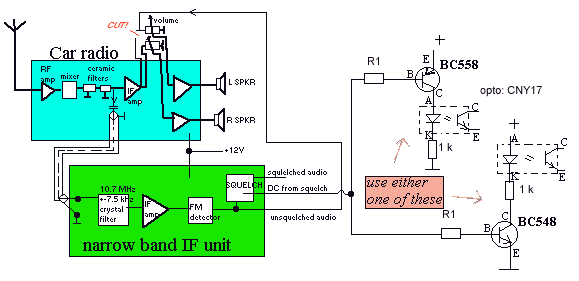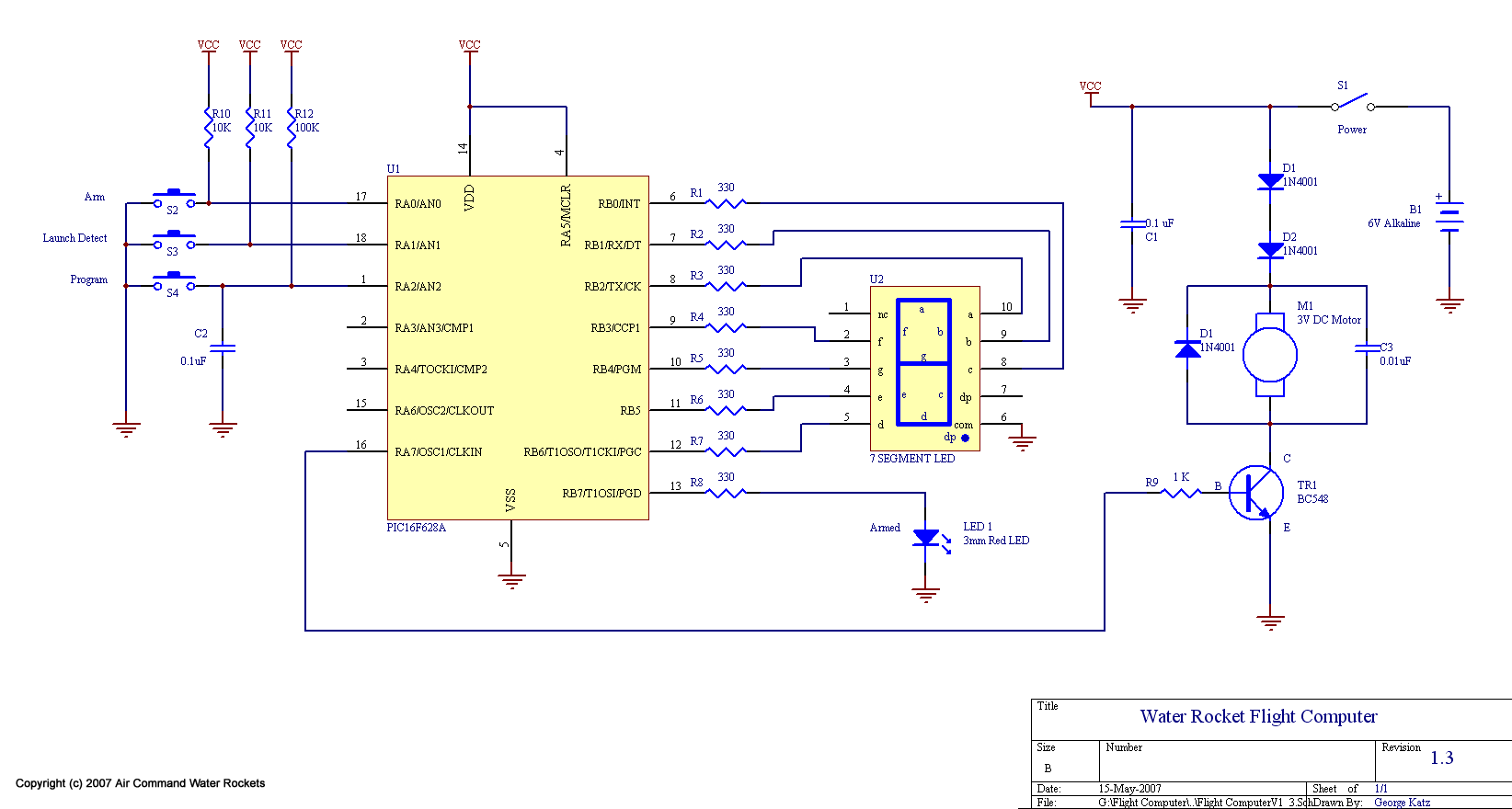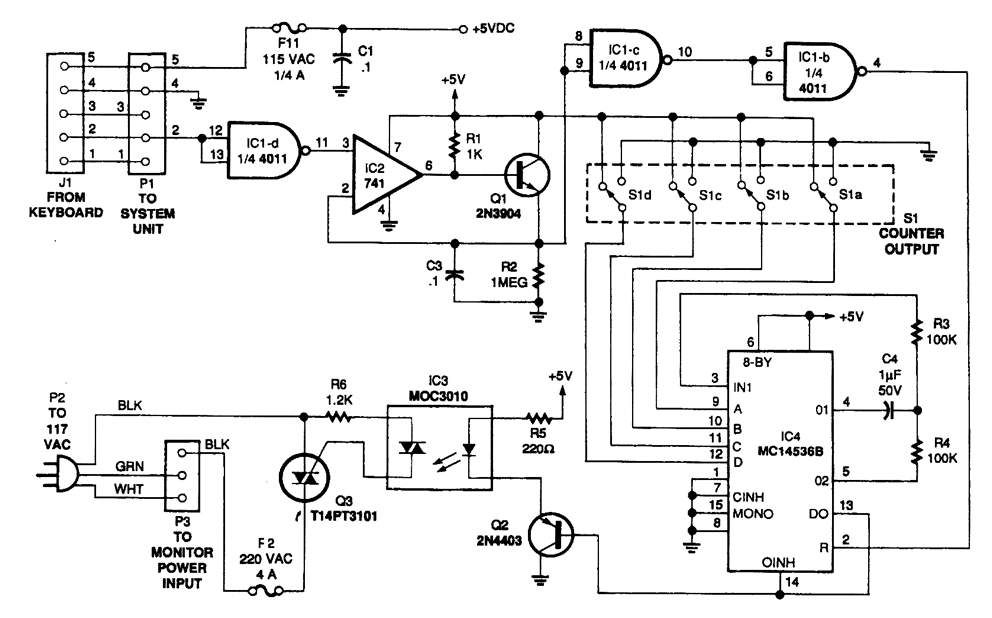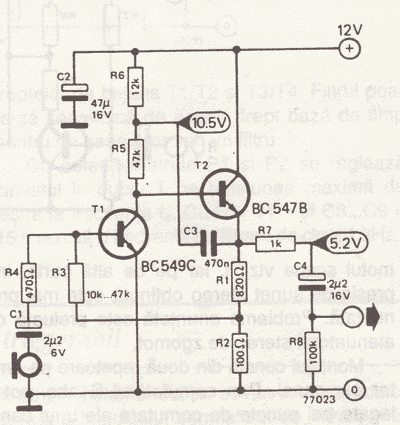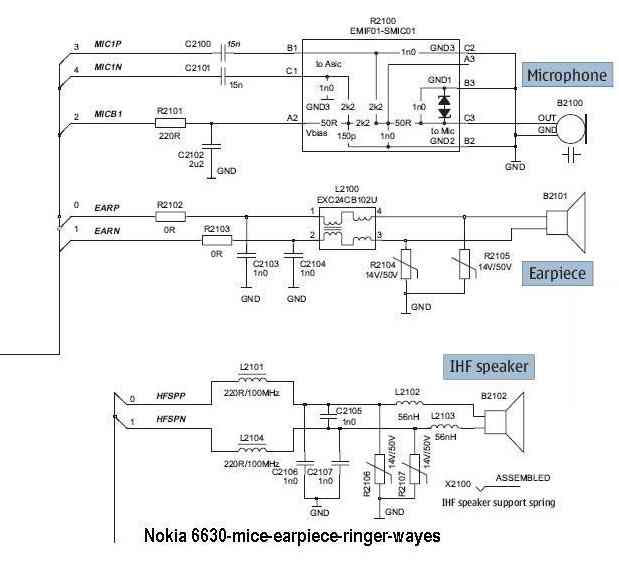
Computer Microphone
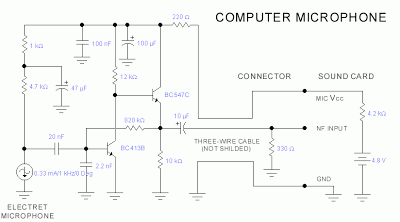
This circuit was submitted by Lazar Pancic from Yugoslavia. The sound card for a PC typically includes a microphone input, speaker output, and sometimes line inputs and outputs. The microphone input is designed specifically for dynamic microphones, operating within an impedance range of 200 to 600 ohms. Lazar has modified the sound card to accommodate a common electret microphone using this circuit. He has created a composite amplifier utilizing two transistors. The BC413B operates in a common emitter configuration to provide a slight amplification of the microphone signal. This is followed by an emitter follower stage using the BC547C transistor. This configuration is essential as the microphone, circuit, and battery may be located some distance from the sound card. The low output impedance of the circuit, combined with a screened cable, ensures a clean signal with minimal noise interference.
The circuit employs a two-stage amplifier design to effectively adapt a common electret microphone for use with a PC sound card. The first stage utilizes the BC413B transistor configured in a common emitter arrangement. This configuration is advantageous for providing voltage gain, which enhances the low-level audio signal from the electret microphone. The gain achieved in this stage is crucial for compensating for the inherent low output of electret microphones, which typically require additional amplification to achieve adequate signal levels for processing by the sound card.
Following the initial amplification stage, the signal is fed into the second stage, which employs the BC547C transistor configured as an emitter follower. The emitter follower configuration is characterized by its high input impedance and low output impedance, making it ideal for driving longer cable runs without significant signal degradation. This is particularly important in applications where the microphone and associated circuitry are situated at a distance from the sound card, as it minimizes the risk of noise pickup and signal loss.
The overall design ensures that the output signal remains strong and clear, allowing for effective audio capture and transmission to the sound card. The use of screened cables further enhances the circuit's performance by shielding against electromagnetic interference, which can be a significant issue in audio applications. This setup is particularly beneficial for users who wish to utilize electret microphones in environments where traditional dynamic microphones may not be suitable or available.This circuit was submitted by Lazar Pancic from Yugoslavia. The sound card for a PC generally has a microphone input, speaker output and sometimes line inputs and outputs. The mic input is designed for dynamic microphones only in impedance range of 200 to 600 ohms. Lazar has adapted the sound card to use a common electret microphone using this cir cuit. He has made a composite amplifier using two transistors. The BC413B operates in common emitter to give a slight boost to the mic signal. This is followed by an emitter follower stage using the BC547C. This is necessary as the mic and circuit and battery will be some distance from the sound card, the low output impedance of the circuit and screened cable ensuring a clean signal with minimum noise pickup. 🔗 External reference
The circuit employs a two-stage amplifier design to effectively adapt a common electret microphone for use with a PC sound card. The first stage utilizes the BC413B transistor configured in a common emitter arrangement. This configuration is advantageous for providing voltage gain, which enhances the low-level audio signal from the electret microphone. The gain achieved in this stage is crucial for compensating for the inherent low output of electret microphones, which typically require additional amplification to achieve adequate signal levels for processing by the sound card.
Following the initial amplification stage, the signal is fed into the second stage, which employs the BC547C transistor configured as an emitter follower. The emitter follower configuration is characterized by its high input impedance and low output impedance, making it ideal for driving longer cable runs without significant signal degradation. This is particularly important in applications where the microphone and associated circuitry are situated at a distance from the sound card, as it minimizes the risk of noise pickup and signal loss.
The overall design ensures that the output signal remains strong and clear, allowing for effective audio capture and transmission to the sound card. The use of screened cables further enhances the circuit's performance by shielding against electromagnetic interference, which can be a significant issue in audio applications. This setup is particularly beneficial for users who wish to utilize electret microphones in environments where traditional dynamic microphones may not be suitable or available.This circuit was submitted by Lazar Pancic from Yugoslavia. The sound card for a PC generally has a microphone input, speaker output and sometimes line inputs and outputs. The mic input is designed for dynamic microphones only in impedance range of 200 to 600 ohms. Lazar has adapted the sound card to use a common electret microphone using this cir cuit. He has made a composite amplifier using two transistors. The BC413B operates in common emitter to give a slight boost to the mic signal. This is followed by an emitter follower stage using the BC547C. This is necessary as the mic and circuit and battery will be some distance from the sound card, the low output impedance of the circuit and screened cable ensuring a clean signal with minimum noise pickup. 🔗 External reference
Warning: include(partials/cookie-banner.php): Failed to open stream: Permission denied in /var/www/html/nextgr/view-circuit.php on line 713
Warning: include(): Failed opening 'partials/cookie-banner.php' for inclusion (include_path='.:/usr/share/php') in /var/www/html/nextgr/view-circuit.php on line 713
